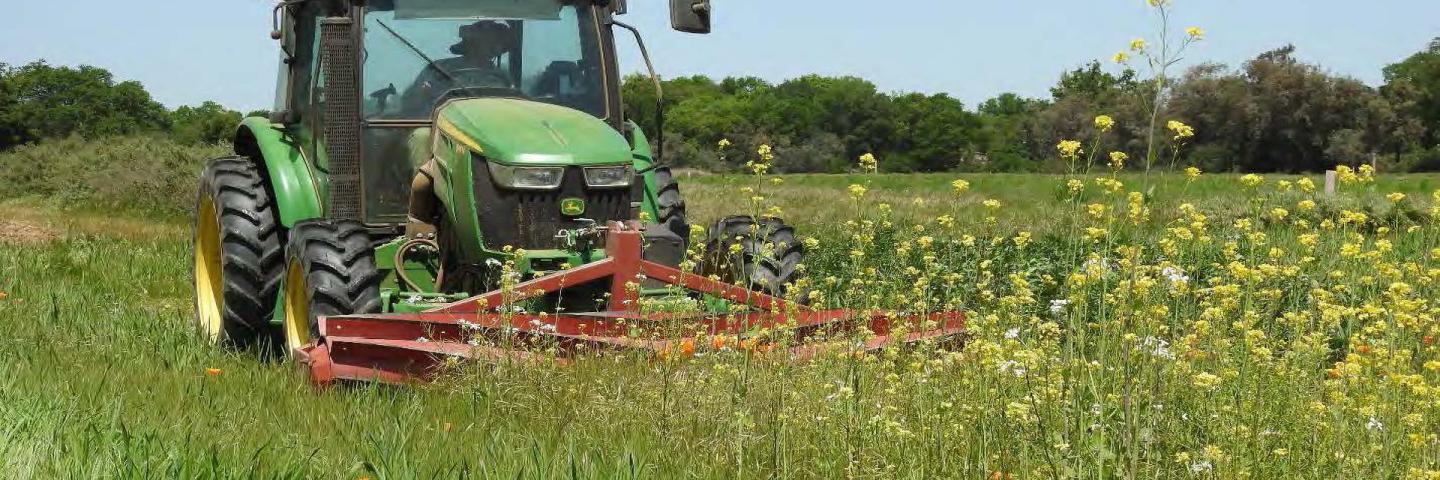Evaluating cover crop termination technologies in the Southwest

Cover cropping systems must be tailored to the needs and schedules of each producer. Considerations include available equipment, a wide variety of species, multiple varieties of those species, required seed bed preparations, appropriate seeding rates, seed mixes, and termination techniques.
The implementation of cover cropping systems must be tailored to the needs of the producer. Considerations include available equipment, a wide variety of species, multiple varieties of those species, required seed bed preparations, appropriate seeding rates, seed mixes, and termination techniques. The Southwestern Plant Materials Centers (PMC) in Nevada, Arizona, California, and New Mexico are evaluating cover crop strategies for their local and regional effectiveness. Appropriate cover crop termination is necessary to ensure that subsequent crops are not negatively impacted by unwanted cover crop seed production and contamination, while maintaining biomass cover after termination. Termination strategies include mowing, roller crimping, herbicide, or winterkill.

The Fallon, Nevada PMC evaluated the winter kill termination potential over three years for several millet species. The species most likely to be terminated by frost, prior to reaching 50% flowering in Fallon, was pearl millet (Pennisetum glaucum); specifically, varieties ‘Leafy 22’ and ‘Tifleaf 3’. Proso millet (Panicum miliaceum) and browntop millet (Urochloa ramosum) flowered early and required different termination strategies, while foxtail millet (Setaria italica) and Japanese millet (Echinochloa spp.) had mixed results and were carefully monitored to determine termination dates. The Tucson, Arizona PMC evaluated the same warm season cover crops with a few additions. In Tucson, ‘Horizon’ white proso millet flowered the earliest, followed by ‘Dove’ proso millet, browntop millet, and the foxtail millets, with Japanese millet and the pearl millets flowering last. The Arizona PMC also evaluated the canopy cover and growth characteristics of black oats and black seeded oats sixty days after planting, at termination, and one month after termination by mowing. The results, along with the biomass data collected, provide location specific performance data to plan cover crop strategies to address resource concerns.
Roller crimper termination involves rolling a large, heavy drum over cover crops, crimping the stems, and, if the timing is right, killing the cover. The Lockeford, California PMC recently concluded an evaluation of the effectiveness of the roller crimper on four cool season cover crops and mixtures commonly used in orchards. Results showed triticale (XTriticosecale) and oats (Avena sativa) sometimes regrew after a roller crimper treatment and may need additional termination strategies, while brassicas (Brassica spp., Sinapis spp., Raphanus sativus) could be effectively terminated if rolled after flowering, and fava beans (Vicia faba) could be terminated if rolled right after early pod set. The Los Lunas, New Mexico PMC is also using a roller crimper in a five-year tillage practice evaluation comparing millet (Panicum spp.), forage corn (Zea mays), and sorghum-sudangrass (Sorghum bicolor x S. bicolor var. sudanese) growth in a tilled, no-till, and roller crimped seed bed. Results are preliminary, but so far, no-till and roll/crimped plots trended towards higher biomass production and lower weed pressure. All results will enhance cover crop and tillage recommendations, assisting producers and conservation planners meet their resource goals.
For additional information on specific species of plants, please see the USDA PLANTS database. Technical information and guidance on the use of conservation plants to address resource concerns can be found on the Plant Materials Program website or contact the nearest Plant Materials Center or plant materials specialist.

